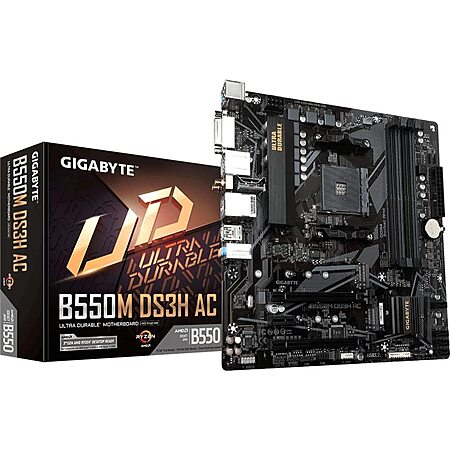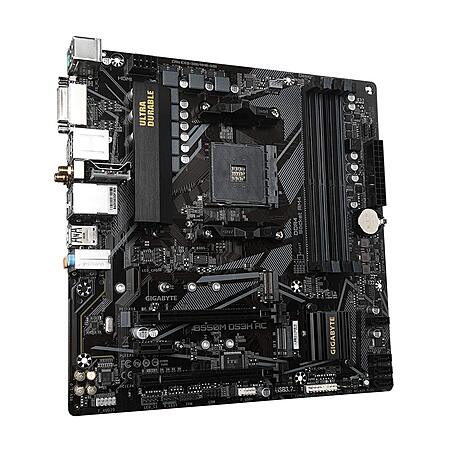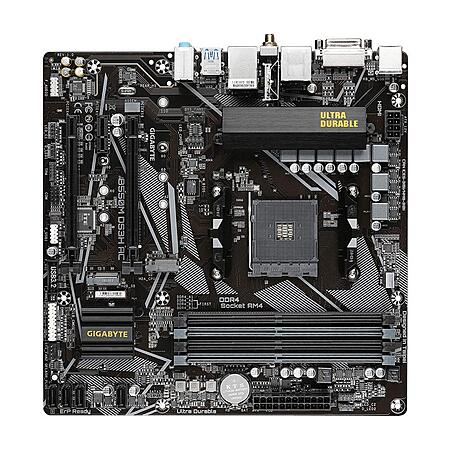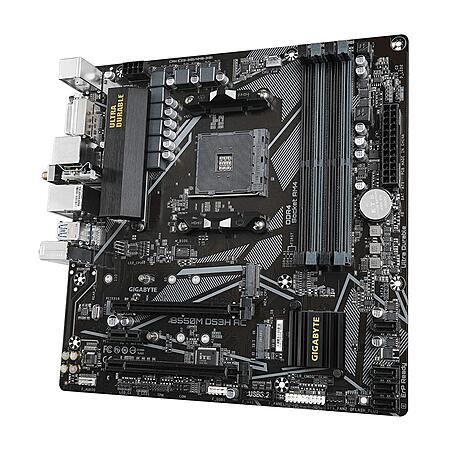https://www.amazon.com/dp/B08R573...dp_it&th=1
$109.99 less $20 Instant Coupon = $87.99 + Free Shipping
Supports AMD Ryzen 5000 Series/ 3rd Gen Ryzen and 3rd Gen Ryzen with Radeon Graphics Processors Dual Channel ECC/ Non-ECC Unbuffered DDR4, 4 DIMMs 5+3 Phases Pure Digital VRM Solution with Low RDS(on) MOSFETs Ultra Durable PCIe 4.0 Ready x16 Slot Dual Ultra-Fast NVMe PCIe 4.0/3.0 M.2 Connectors Onboard Intel® Dual Band 802.11ac Wireless & BT 4.2 with WIFI Antenna High Quality Audio Capacitors and Audio Noise Guard for Ultimate Audio Quality GIGABYTE Exclusive 8118 Gaming GbE LAN with Bandwidth Management Rear HDMI & DVI Support RGB FUSION 2.0 Supports Addressable LED & RGB LED Strips Smart Fan 5 Features Multiple Temperature Sensors , Hybrid Fan Headers with FAN STOP Q-Flash Plus Update BIOS without Installing the CPU, Memory and Graphics Card Anti-Sulfur Resistors Design.






Leave a Comment
13 Comments
Sign up for a Slickdeals account to remove this ad.
Our community has rated this post as helpful. If you agree, why not thank The_Love_Spud
However, the placement of the PCIe slots can be problematic if you're going to use a GPU. Whereas some motherboards position the PCIe x1 slot above to primary GPU PCIe slot to ensure it remains usable when a GPU is installed, in this motherboard anything larger than a single slot video card will invariably block the PCIe x1 slot.
The lowest PCIe x16 slot is usable for a GPU. However, that slot has two challenges as a GPU option:
- The slot may not be usable for larger width graphic cards in some MicroATX-specific cases (which could limit the slot for use with single slot video cards).
- The slot is limited to PCIe 3.0 whereas, depending upon the CPU, the top slot can support PCIe 4.0 in this model.
For someone planning to use an integrated GPU, a single slot video card, or s.imply never planning to use an expansion card other than a GPU, none of these concerns should be an issue. For anyone else I'd certainly take this design choice into consideration vs. motherboards which may cost more but take more care in the placement of their PCIe slots.Good luck!
Jon
edit: seems like above poster says there's two, didn't notice
However, the placement of the PCIe slots can be problematic if you're going to use a GPU. Whereas some motherboards position the PCIe x1 slot above to primary GPU PCIe slot to ensure it remains usable when a GPU is installed, in this motherboard anything larger than a single slot video card will invariably block the PCIe x1 slot.
The lowest PCIe x16 slot is usable for a GPU. However, that slot has two challenges as a GPU option:
- The slot may not be usable for larger width graphic cards in some MicroATX-specific cases (which could limit the slot for use with single slot video cards).
- The slot is limited to PCIe 3.0 whereas, depending upon the CPU, the top slot can support PCIe 4.0 in this model.
For someone planning to use an integrated GPU, a single slot video card, or s.imply never planning to use an expansion card other than a GPU, none of these concerns should be an issue. For anyone else I'd certainly take this design choice into consideration vs. motherboards which may cost more but take more care in the placement of their PCIe slots.Good luck!
Jon
Sign up for a Slickdeals account to remove this ad.
Our community has rated this post as helpful. If you agree, why not thank The_Love_Spud
From the support site [gigabyte.com]:
- AMD Ryzen™ 5000 Series/3000 Series Processors support SATA and PCIe 4.0 x4/x2 SSDs
- AMD Ryzen™ 5000 G-Series/4000 G-Series Processors support SATA and PCIe 3.0 x4/x2 SSDs
1 x M.2 connector (M2B_SB), integrated in the Chipset, supporting Socket 3, M key, type 2280 SSDs:Jon
From the support site [gigabyte.com]:
Good luck!
Jon
Our community has rated this post as helpful. If you agree, why not thank The_Love_Spud
While you're at it, a sharpie might be useful to mark these distinctions on the drives themselves.
With G-series CPUs this process would only make identifying the drives easier, but doesn't provide any performance benefit for the the boot/primary SSD since G-series CPUs don't have support for PCIe 4.0 on either slot.
Good luck!
Jon
While you're at it, a sharpie might be useful to mark these distinctions on the drives themselves.
With G-series CPUs this process would only make identifying the drives easier, but doesn't provide any performance benefit for the the boot/primary SSD since G-series CPUs don't have support for PCIe 4.0 on either slot.
Good luck!
Jon
Leave a Comment